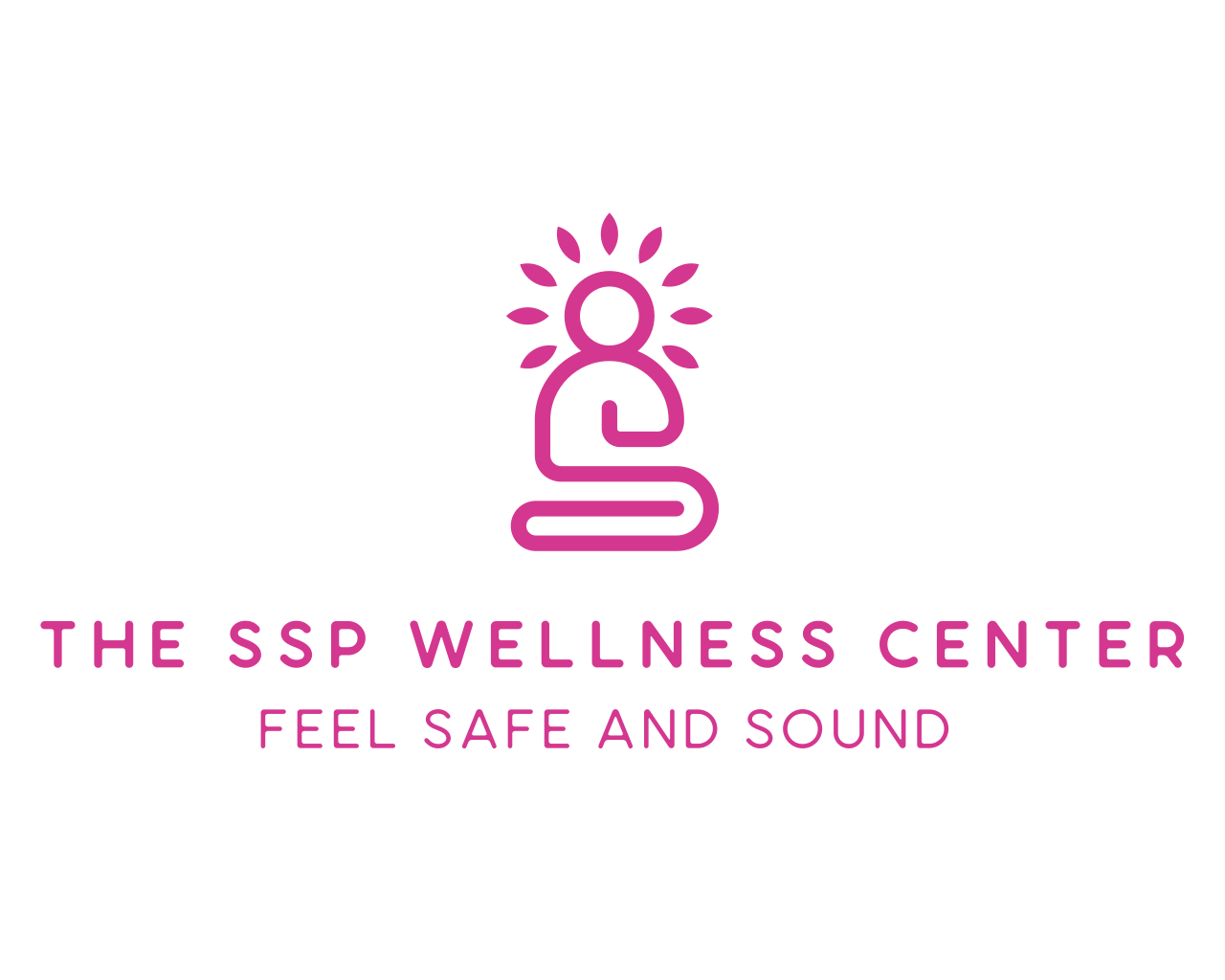The Safe and Sound Protocol (SSP) is a game-changing therapeutic tool designed to support those dealing with conditions and symptoms rooted in autonomic nervous system dysregulation. It’s safe and effective for most people, offering relief from a wide range of conditions.
Whether you’re tackling anxiety, looking to enhance social engagement, or trying to manage sensory sensitivities, the SSP could be just what you need.
How Does the SSP Work?
So, how does this fabulous therapy actually work? Basically, the SSP uses specially filtered music to reset your nervous system. By targeting the vagus nerve via the muscles of the middle ear, the protocol encourages a shift from a stressed state to one of calm and safety. Clever, eh?
This shift is crucial for healing because when your nervous system feels secure, it gives your body the foundation it needs for rest and recovery. Plus, it means the body also feels safe enough to better absorb and integrate other therapeutic practices.
Here’s what SSP is doing when it resets your nervous system:
- Calming the Stress Response: The filtered music stimulates the vagus nerve, signaling safety to the body. By nudging you into a state of rest and digest, your body is given the tools it needs to heal and recover more easily.
- Enhancing Social Engagement: Safe connection is crucial for healing. SSP enhances our ability to engage socially, so we can learn to interpret social cues of safety better. In states of dysregulation and emotional distress we often lose this ability, keeping us stuck in a state of fear and anxiety.
- Supporting Emotional Regulation: A calmed stress response + enhanced social engagement = better emotional regulation. This means we turn the dial down on those inappropriate reactions and start responding better to the things that trigger us and the environment around us.
By creating a safe space for your nervous system to thrive you can ease into healing without feeling overwhelmed.
What Conditions Might Benefit from the SSP?
As the nervous system is so intricately linked to many functions of the body, SSP can be beneficial for a wide range of conditions.
Here are some of the most common conditions that the Safe and Sound Protocl can effectively support:
- ADHD: If you or your child find it hard to focus, SSP can help improve attention and impulse control.[*]
- Autism: Many on the autism spectrum find that SSP helps enhance communication and social skills.[*][*]
- Long COVID: SSP can provide relief for lingering symptoms like fatigue and brain fog after a COVID-19 infection.[*]
- Misophonia: If certain sounds are just way too much, SSP can help desensitize your reactions. Special adaptations to the program may be required.
- Depression & Anxiety: Feeling overwhelmed? SSP may help lift those heavy feelings and restore your sense of calm.[*][*]
- Trauma (PTSD/CPTSD): The protocol offers a safe space for helping to process and regulate emotional responses tied to past traumas.[*]
- Chronic Pain: If ongoing pain disrupts your daily life, SSP might help to manage those sensations.
But it doesn’t end here. These are just some of the most common reasons people choose to do SSP. It is our experience however that the benefits of SSP extend much further.
From IBS and food sensitivities to exercise intolerance and insomnia, we’ve seen improvements that extend far beyond the expected use cases of SSP. You can find an extensive list of conditions that may benefit from the SSP here.
Who Else Can Benefit from SSP?
Beyond specific conditions, there’s another group of people who might really need SSP: those who feel like they’ve tried everything and still aren’t seeing results.
If you’ve been doing all the things—therapies, healing modalities, supplements, detoxes—and either haven’t made much progress or feel like you’ve hit a wall, your nervous system might be seriously dysregulated. When your system is stuck in fight-or-flight, it’s basically locked in survival mode, and nothing you try is going to stick. SSP helps bring your nervous system out of that state, making it feel safer and more open to healing. Once your body feels safe, it can actually respond better to those other therapies and practices you’ve been trying.
A regulated nervous system is crucial for healing because it allows your body to receive and process what it needs. Whether it’s emotional therapy, supplements, or even detox protocols that you couldn’t tolerate before, SSP can help by creating the foundation your body needs to feel safe enough to heal. With your nervous system supported, you might find you can finally break through that plateau and start seeing real progress.

Who Can Benefit from doing SSP with us?
We honestly believe that almost anyone, and anything, can benefit from the SSP – IF taken slowly enough. Yup, even our cat is doing it.
Though other SSP practitioners shy away from certain conditions, we take a slightly different approach to the Safe and Sound Protocol than most. With our unique approach, we really feel like most people can experience results from SSP.
Here’s why:
Affordability: Nervous system regulation shouldn’t be a privilege. We believe it is the foundation of good health, and it should be accessible to everyone. We offer all the essential SSP elements at an affordable monthly price, so you can get the support you need without having to stump up high upfront costs.
We Go Slow: We are one of the very few practitioners microdosing SSP. This very slow and very gentle approach means we can support a wider range of needs and conditions than other practitioners. By personalizing the program’s pacing to your unique nervous system response, we ensure minimum side effects with maximum results. And this means we are able to support a wider range of conditions. For more about our approach, check out this article.
Focus on Safety: When combined with safe and supportive co-regulation, SSP creates a safe space for the nervous system to heal. Our subscription packages are based around these principles and provide you with as little or as much hands-on support as you need.
Remote Delivery: From PTSD to chronic pain, we understand many of our clients deal with chronic health conditions that can be debilitating and exhausting. Our subscription options mean you can experience the Safe and Sound Protocol from home. No in-person appointments required. No need to add more to your plate or schedule.
The Buzz: What Others Are Saying About SSP
There’s increased chatter about SSP lately, and with good reason! Many practitioners and clients have shared their success stories, showing that SSP isn’t just for children or those with specific sensory conditions. From those simply looking to boost their overall well-being, to those with complex chronic conditions, SSP is proving beneficial.
Here’s how some of our clients have found it beneficial.
- Parents of Children with Special Needs: Parents rave about how SSP has improved their children’s emotional regulation and social interactions. It’s made everyday life a lot smoother for families dealing with sensory sensitivities and neurodivergent behaviors.
- Adults Seeking Relief: Many adults dealing with day-to-day anxiety, trauma, or chronic pain report that SSP has been a game-changer. It’s even helping people eliminate their food sensitivities. And what do they all tell us? They wish they’d discovered SSP sooner!
- Therapists and Practitioners: Other health professionals that we work with are recommending SSP as a complementary therapy. They’ve noticed that it can enhance the effectiveness of their treatments, making it a fantastic addition to any wellness routine.
FAQ: Who Can Benefit from SSP?
We get asked a lot of questions around who can benefit from the SSP. Here are some commonly asked ones:
1. Can SSP help people of all ages?
Absolutely! SSP is safe and effective for both kids and adults – assuming you do not have any contraindicated conditions.
2. Is SSP for kids?
Definitely! Many children, especially those with anxiety, sensory sensitivities or neurodevelopmental conditions, benefit from SSP.
3 Is SSP suitable for adults?
Yes! Adults facing anxiety, trauma, chronic conditions, and much more often find significant relief through SSP.
4. Can I use SSP for my dog?
Yes! Many pet owners have successfully used SSP to help their furry friends with anxiety and stress. Please contact us if you would like to use SSP for pets.
5. What about SSP for OCD?
SSP has shown positive outcomes for individuals with Obsessive-Compulsive Disorder (OCD). Many clients report improved emotional regulation, making it easier to manage obsessive thoughts and compulsive behaviors.
6. What about SSP for ADHD?
For individuals with Attention Deficit Hyperactivity Disorder (ADHD), SSP may be particularly beneficial. Clients often find that they can better manage impulsivity and stay on task after engaging with SSP. Parents frequently share that their children experience improved concentration and reduced hyperactivity, making daily activities feel more manageable.[*]
7. What about SSP for autism?
SSP may also be a valuable tool for individuals on the autism spectrum. Many clients report that the protocol helps create a more comfortable and secure environment, making it easier to engage socially and navigate sensory challenges. By promoting a sense of safety, SSP supports emotional regulation, which can enhance communication skills and social interactions. Parents often notice significant improvements in their children’s ability to self-regulate and engage with others after using SSP.[*][*]
8. What about SSP for trauma?
SSP is particularly effective for individuals dealing with trauma. Resetting the nervous system creates an internal sense of safety that can significantly reduce the frequency and intensity of trauma-related symptoms, allowing individuals to process their emotions more effectively.[*]
9. What about SSP for anxiety?
SSP may also highly beneficial for those grappling with anxiety. The resetting of the nervous system allows for better emotional processing, contributing to a more resilient emotional state. Clients frequently report a reduction in anxiety attacks and a greater ability to cope with stressors.[*]
10. What about SSP for chronic pain?
SSP may provide valuable support for chronic pain management. By retraining the nervous system SSP can help reduce the perception of pain and promote whole-body relaxation. Clients often find that SSP allows them to cope better with their chronic pain, enhancing their overall quality of life and functionality.
11. What about SSP for depression?
SSP might also be a beneficial tool for individuals experiencing depression. As individuals engage with the SSP, they often report improved mood and emotional stability, making it easier to navigate daily challenges. The protocol also focuses on creating feelings of safety and connection, which can also help alleviate symptoms of hopelessness and emotional distress.[*]
12. What about SSP for epilepsy?
While SSP can benefit many, it’s essential for individuals with active or uncontrolled seizures to consult a healthcare provider first. If you have a history of seizures, discussing your specific situation with your doctor or neurologist is crucial to determine if SSP is safe for you. Some individuals with controlled seizure conditions have reported benefits from SSP, but it’s vital to proceed with caution. Always prioritize safety—your well-being is our top concern!

Who May Not Benefit from SSP?
While SSP is designed to help many, there are certain conditions where it may not be suitable, or certain adaptations to the program could be required. Conditions include:
- Perforated or Ruptured Eardrums
- Seizures
- Misophonia or Hyperacusis
- Severe Tinnitus
- Autoimmune, Neurological, & Chronic Conditions
- Bipolar, Borderline, and Dissociative Disorders
- Self-Harm and Suicidal Thoughts
- Psychosis or Recent Psychiatric Hospitalizations
- Currently Going Through Significant Life Changes
For any of these conditions, please contact us to assess your suitability and reach out to your healthcare provider for further clarification.
You can also find more details on these conditions and the circumstances in which SSP can help, here.
The Safe and Sound Protocol is a promising approach for a wide range of individuals dealing with various conditions. It can even be a valuable tool for just enhancing your overall well-being.
If you have questions about whether SSP might be right for you or someone you know, don’t hesitate to reach out. We’re here to help!

